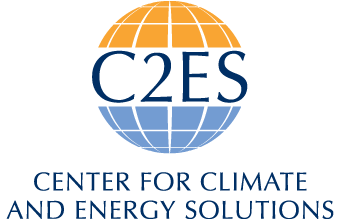For over three decades, federal tax credits—in concert with state action and private sector clean energy goals—have helped create a growing pool of demand for wind and solar power, propelling these technologies down the cost curve. Indeed, these incentives have yielded impressive results. Over the past ten years alone, the cost of wind generation has fallen by 70 percent, and the cost of solar has decreased by 90 percent. With an evolving economy and ever-growing demand for clean energy, federal energy policies must continue to target and support the energy solutions that allow American ingenuity to thrive.
In 2022, Congress enacted new, expanded technology-neutral production tax credits (PTC) and investment tax credits (ITC) to provide critical incentives and much-needed certainty to get nascent energy technologies on a hotline to deployment. However, as Congress scours federal programs for cuts in a sweeping budget agenda, the energy tax credits that were primed to catalyze billions in economic growth could be threatened. If the goal is to propel new technologies while revitalizing and onshoring American manufacturing and infrastructure, why offer up these versatile credits or narrow their use?
America’s abundant energy and natural resources have always been key drivers of our economic prosperity. Now, after a multi-decadal pause, demand for electricity and industrial heat are rapidly growing, and new energy sources are needed to meet that near-term jump in demand. The U.S. economy of tomorrow—an economy built on artificial intelligence-enabled data centers and a renaissance in domestic manufacturing across multiple sectors—depends on new firm energy and capitalizing on natural resources. Energy incentives, like 45Y and 48E, support deployment and can ensure American enterprise can thrive today and tomorrow.
Advanced nuclear power and enhanced geothermal power are two examples of extremely promising clean and always-available technologies capable of producing electricity and heat. Both are ready for first-of-a-kind deployments, eligible for the technology-neutral tax credits, and at-risk if tax incentives are repealed.
Some new advanced nuclear and small modular reactors are technically ready—or nearly ready—for deployment, thanks to a range of federal incentives. The new designs are particularly attractive because they are smaller and less complex than the previous generation of reactors; and, with modular, factory-repeatable designs, can be deployed at lower cost and on an even smaller land footprint.
Similarly, commercial-scale enhanced geothermal projects are being deployed, relying on a range of supports. Advances in deep-drilling technology, learned from the oil and gas industry, are making it more economic to access “hot rocks” thousands of feet below the earth’s surface, greatly expanding where geothermal power is geographically feasible in the United States.
Since advanced nuclear and enhanced geothermal are relatively nascent commercial technologies, the survival of new projects depends greatly upon having access to the federal tax credits (and other support) at this early stage; the technology-neutral clean electricity tax credits can help them move down the cost curve and help usher in a new period of American energy dominance.
In order to provide all companies the flexibility that they need to make new projects pencil out, they can choose whichever credit works best for them; however, the credits cannot be combined. Some companies may opt for an ITC to help offset high, upfront capital costs or it might make more financial sense for companies to receive the steady, multi-year revenue stream provided by a PTC.
We’re on the cusp of a new clean energy boom. Pursuit of an all-of-the-above strategy that puts American companies and workers in the driver’s seat of the energy transition means investing now in the proven technologies that are fueling our competitive advantage.
Moreover, we need a portfolio of new energy technologies to power our future, including significant quantities of clean, firm power and heat. The ability of advanced nuclear, enhanced geothermal, and other low-carbon generation to scale can help provide the reliable and affordable energy necessary to drive economic prosperity for decades to come.
American innovators, companies, communities, and industries rely on certainty to make long-term investments. Maintaining the technology neutral tax credits help provide that certainty and prove that the United States is a safe place to invest in the foundational innovations that will shape society for generations.
